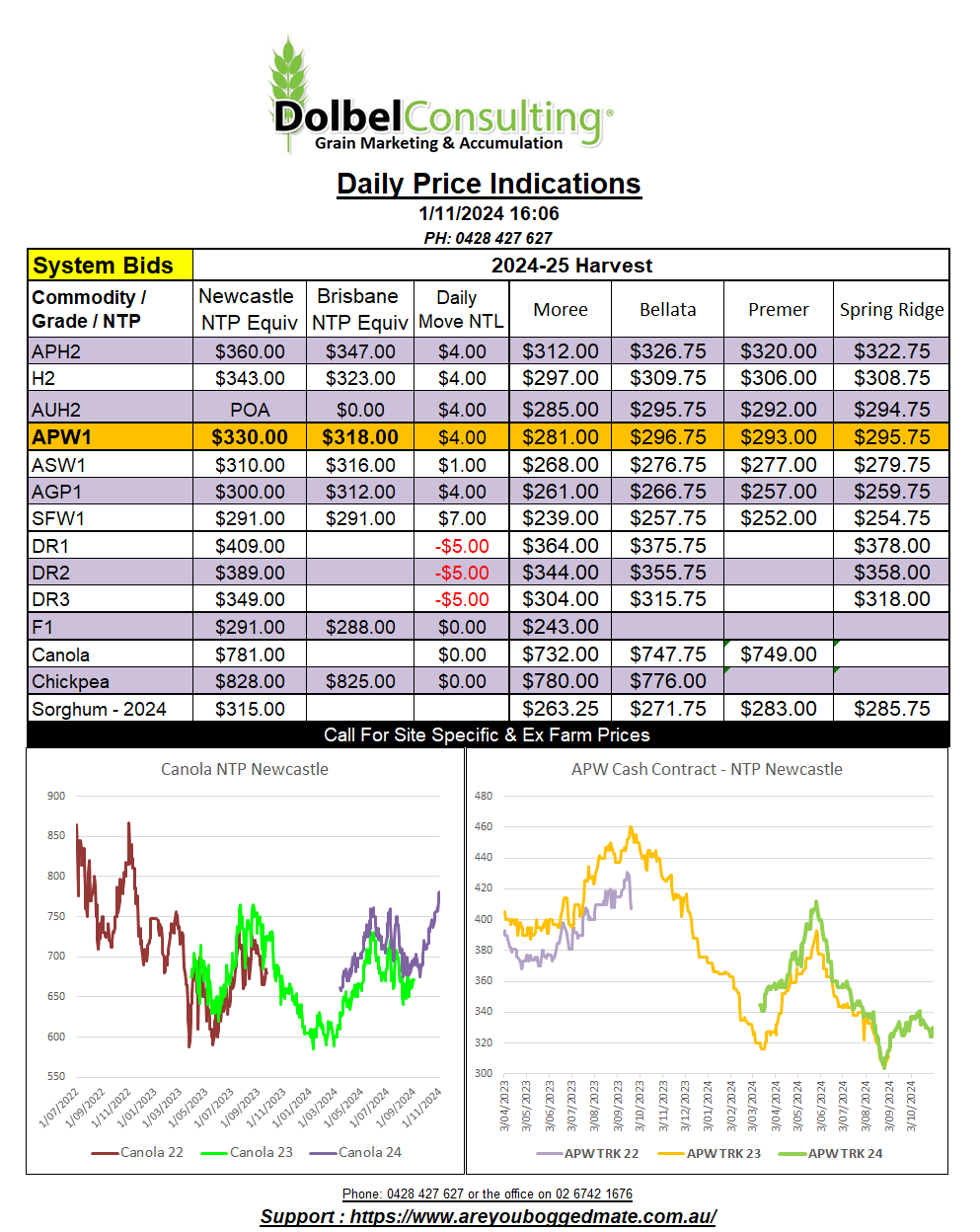1/11/24 Prices

H5N1 bird flu was detected in a pig on a small mixed farmlet in Oregon USA where both pigs and poultry were in a mixed environment. This is the first recorded cross over of the H5N1 bird flu virus from birds to pigs in the US and has attracted a significant amount of attention from the media. Enter the pharmaceutical companies, stage left.
US wheat futures found support this week from a terrible crop condition estimate for the new crop. Sown into poor conditions, the crop is estimated at just 38% G/E, the lowest in over 20 years. Showers that were predicted to bring good rain to the HRWW belt this week are yet to eventuate. The 14 day precipitation anomaly map shows a large swath of the US winter wheat region, particularly the HRWW belt, receiving just 20% or less of normal rainfall over the last 14 days. The 30 day anomaly map looks no better, with little to no rain falling for a month or more across parts of Texas and Oklahoma.
The GFS model is predicting things to turn around across the HRWW belt as of this weekend. The model predicts up to 6″ to 8″ of rain could accumulate over the next 7 days across NE Oklahoma, with general falls of 25mm to 50mm not expected to be uncommon across much of the HRWW belt. This could be the lifeline the US winter wheat crop needs. If expectations are not met the US winter wheat crop will go into the winter period in a poor state, fuelling speculation about US production over the Aussie summer.
Condition in the Volga Valley, Russia’s primary winter wheat producing region, shows 14 days rainfall totals may have stopped the crop from declining further and should improve establishment after many producers had sown wheat into dry soil. Much of Ukraine remains very dry. Black Sea wheat production could be lower again next year but we are a long way from any reliable predictions for northern hemisphere wheat production in November.
Ukraine continues to export canola to the EU at very good numbers. Numbers that support current domestic bids here.
